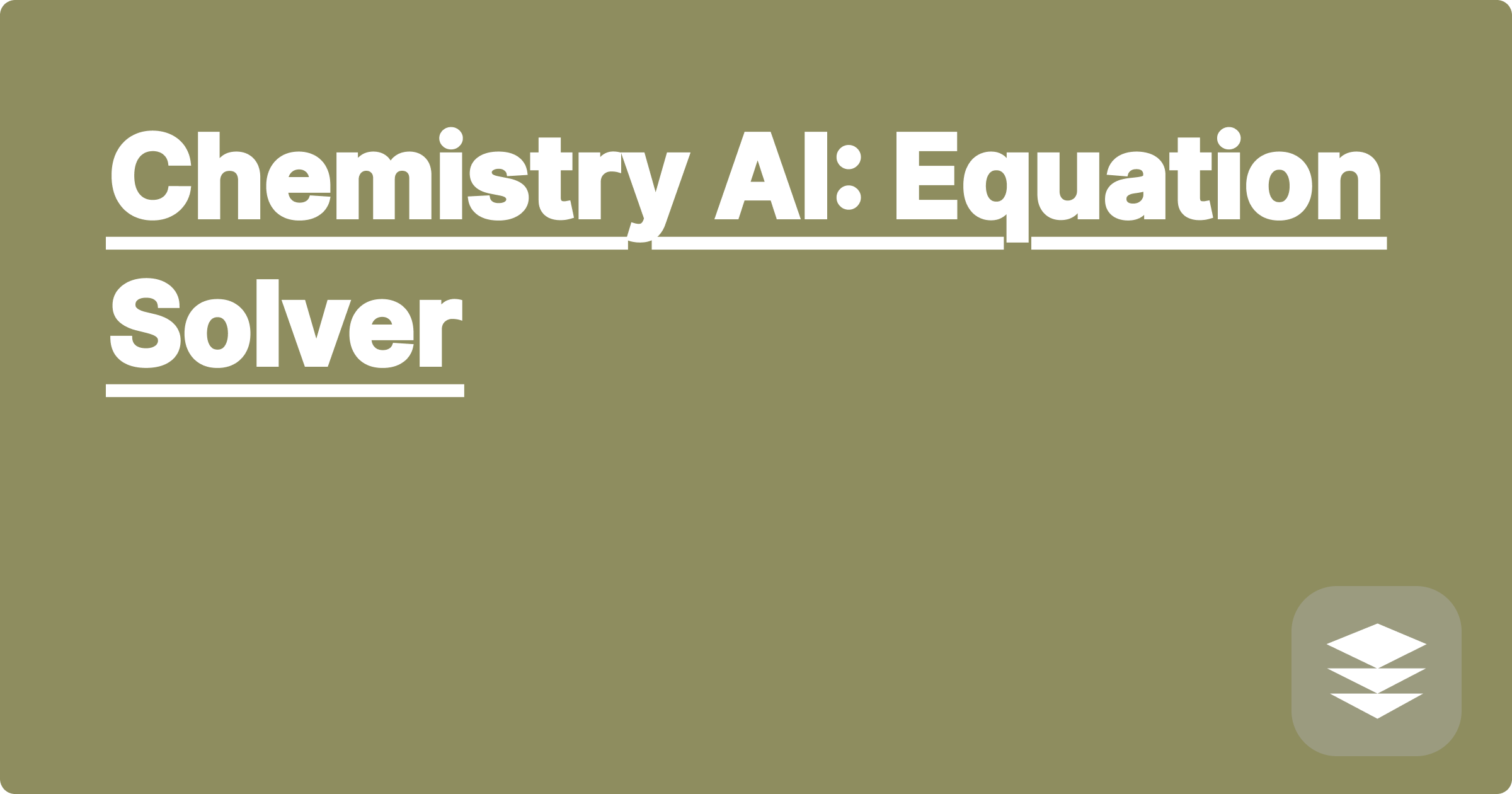
Balancing chemical equations, predicting reaction products, and calculating stoichiometric ratios are fundamental yet often challenging aspects of chemistry. These tasks can be time-consuming and prone to errors, particularly for complex reactions. Artificial intelligence (AI) offers a promising new approach to streamline these processes, providing STEM students and researchers with powerful tools to enhance their understanding and efficiency in chemical problem-solving. This emerging field of "Chemistry AI" is revolutionizing how we approach chemical equations, offering a glimpse into the future of chemical education and research.
For STEM students, mastering these skills is crucial for success in various disciplines, from basic chemistry courses to advanced research projects. Researchers also benefit from efficient and accurate methods for handling chemical equations, enabling them to focus on more complex scientific questions. AI-powered equation solvers can significantly reduce the time and effort required for these tasks, allowing students and researchers to dedicate more time to critical thinking, experimental design, and data analysis. This shift in focus can lead to deeper learning and accelerated scientific discovery.
Chemical equations represent the transformation of reactants into products. Balancing these equations requires ensuring that the number of atoms of each element is equal on both sides of the equation, adhering to the law of conservation of mass. Traditional methods for balancing equations often involve trial and error, which can be tedious and inefficient, especially for complex reactions involving multiple reactants and products. Predicting reaction products requires a deep understanding of chemical reactivity and reaction mechanisms. This can be challenging, even for experienced chemists, as it involves considering various factors such as electronegativity, oxidation states, and reaction conditions. Furthermore, calculating stoichiometric ratios, which relate the amounts of reactants and products in a chemical reaction, is essential for determining the limiting reagent, theoretical yield, and percent yield. These calculations can be complex and prone to errors if not performed meticulously.
AI tools like ChatGPT, Claude, and Wolfram Alpha offer powerful capabilities for solving chemical equations and related problems. These tools leverage advanced algorithms and vast databases of chemical information to provide accurate and efficient solutions. ChatGPT and Claude can be used to generate balanced chemical equations, predict reaction products, and explain reaction mechanisms. Wolfram Alpha, with its comprehensive computational knowledge engine, can perform stoichiometric calculations, determine limiting reagents, and predict theoretical yields. These AI tools can be accessed through user-friendly interfaces, making them readily available to students and researchers of all levels.
Using these AI tools is generally straightforward. First, clearly define the problem you want to solve. For example, if you need to balance a chemical equation, provide the unbalanced equation as input to the AI tool. If you want to predict reaction products, specify the reactants and reaction conditions. For stoichiometric calculations, provide the balanced chemical equation and the amounts of reactants or products involved. Next, select the appropriate AI tool for the task. ChatGPT and Claude are well-suited for generating balanced equations and predicting reaction products, while Wolfram Alpha excels at performing complex calculations. Then, input the problem into the chosen AI tool, ensuring that the input is accurate and formatted correctly. The AI tool will then process the input and generate the desired output, which may include the balanced equation, predicted products, stoichiometric ratios, or other relevant information. Finally, carefully review the output and verify its accuracy. While AI tools are generally reliable, it's always good practice to double-check the results, especially for critical applications.
Consider the reaction between sulfuric acid and sodium hydroxide. Inputting "balance H2SO4 + NaOH -> Na2SO4 + H2O" into Wolfram Alpha will instantly generate the balanced equation: "H2SO4 + 2NaOH -> Na2SO4 + 2H2O". Alternatively, asking ChatGPT "What are the products of the reaction between hydrochloric acid and calcium carbonate?" will yield the answer along with a brief explanation of the reaction mechanism. For a more complex example, you could ask Wolfram Alpha to calculate the theoretical yield of ammonia in the Haber-Bosch process given specific amounts of nitrogen and hydrogen. Providing the balanced equation "N2 + 3H2 -> 2NH3" along with the input "10 g N2 and 5 g H2" will generate the theoretical yield of ammonia. These are just a few examples of how AI tools can be used to solve various chemical problems efficiently and accurately.
Integrating AI tools into your STEM workflow can significantly enhance your learning and research capabilities. However, it's essential to use these tools effectively and ethically. Don't rely solely on AI for answers. Use them as a supplement to your understanding, not a replacement for learning fundamental concepts. Always verify the output generated by AI tools and understand the underlying principles behind the solutions. Use AI to explore complex problems and gain deeper insights into chemical phenomena. By combining the power of AI with your own critical thinking and problem-solving skills, you can unlock new levels of academic achievement and research productivity.
In conclusion, AI-powered equation solvers represent a paradigm shift in the way we approach chemical problem-solving. By leveraging the capabilities of tools like ChatGPT, Claude, and Wolfram Alpha, STEM students and researchers can streamline their workflows, reduce errors, and gain deeper insights into chemical principles. Embrace these tools responsibly and ethically, using them to enhance your understanding and accelerate your progress in the exciting world of chemistry. Explore the various AI tools available and discover how they can transform your approach to chemical equations and unlock new possibilities in your academic and research endeavors. The future of chemistry is here, and it's powered by AI.
Physics Help: AI Problem Solver
Engineering AI: Design Optimization
STEM Success: AI Learning Tools
Data Science AI: Analysis Boost